Budapest is the capital city of Hungary (Magyarország fővárosa) and needs no further introduction. Traditionally, it is seen as being made of 3 different towns, Buda (the old capital, first mentioned in year 1247, having a distinct German influence and covering the heights where Buda Castle lies today), Pest (on the other side of Danube River, initially organized by the Romans and first mentioned in year 1148, now roughly covering 2/3 of all Budapest and home to most institutions and official buildings) and Óbuda (the “old Buda”, being inhabited since the Stone Age and the former capital of Pannonia Roman province Aquincum). Since the city is heavily photographed and quite known, I will allow to the images below more space, as details about each sight can be easily found online. Enjoy!

The Buda Castle (Budavári Palota) as seen from the Chain Bridge (Széchenyi Lánchíd) across the Danube River.

The entrance to the Buda Castle Tunnel (Budai Váralagút).
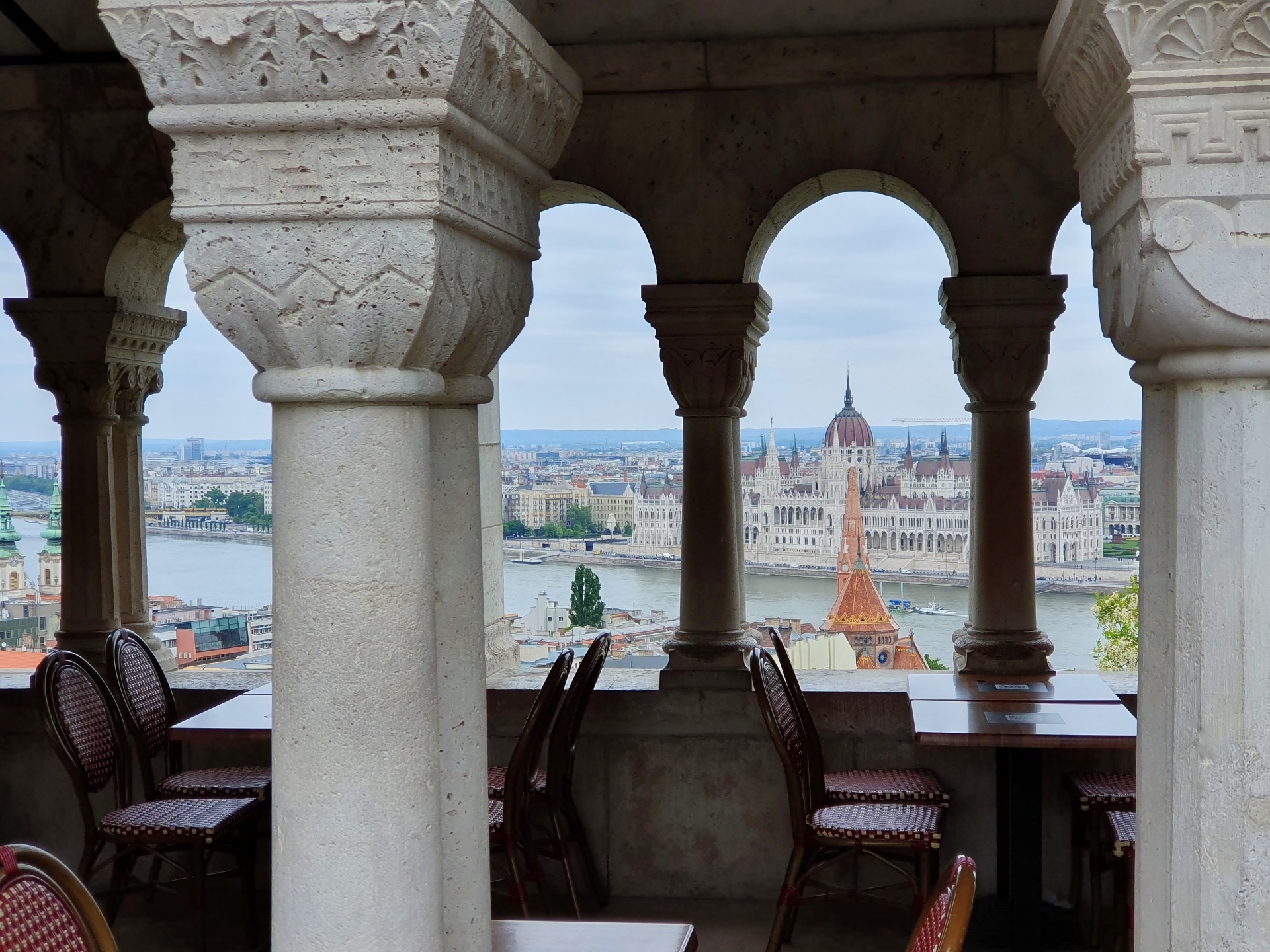
Pest and the Hungarian Parliament, as seen from the Fisherman’s Bastion (Halászbástya).
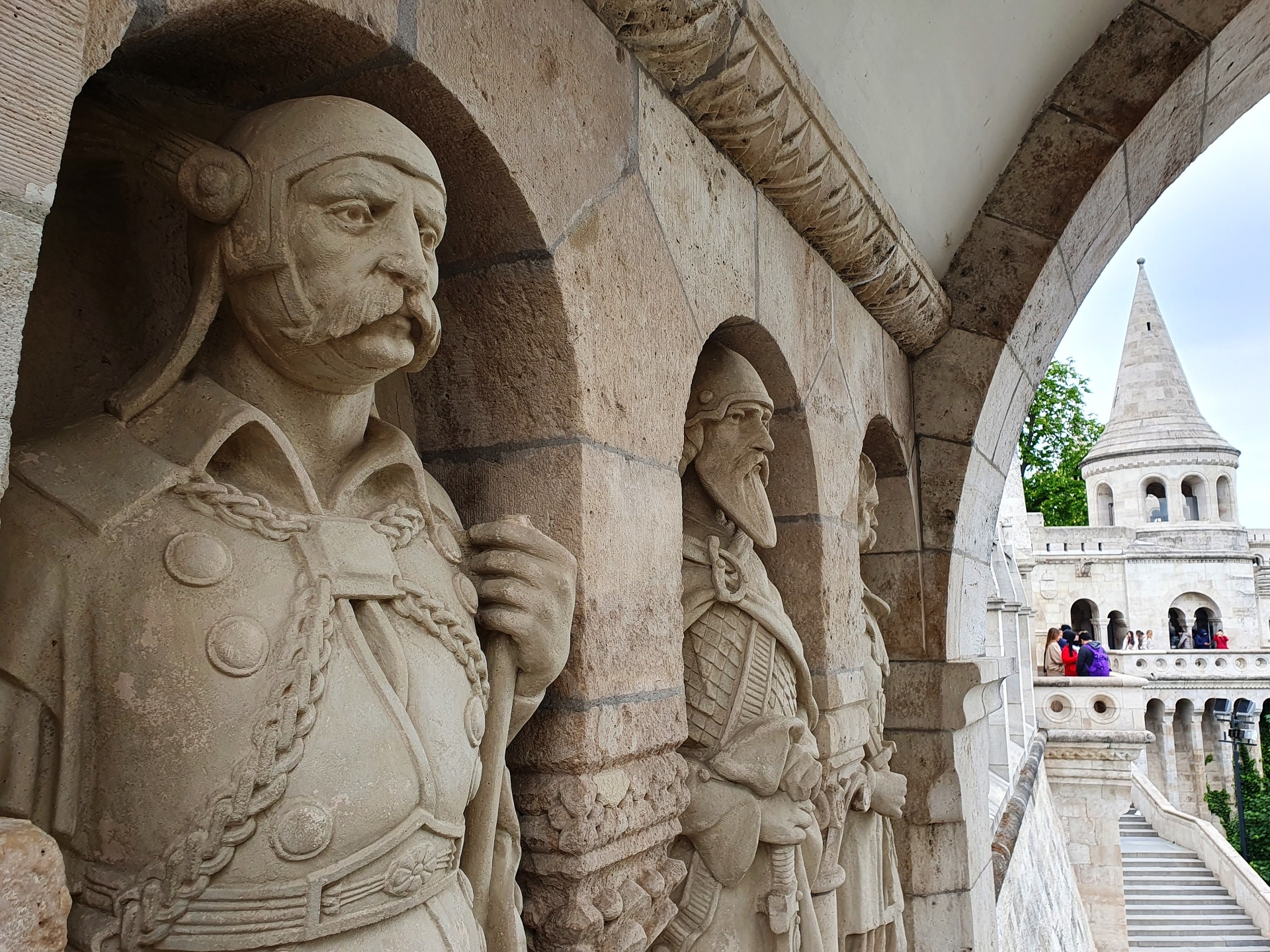
A detail of the statues guarding the Fisherman’s Bastion.
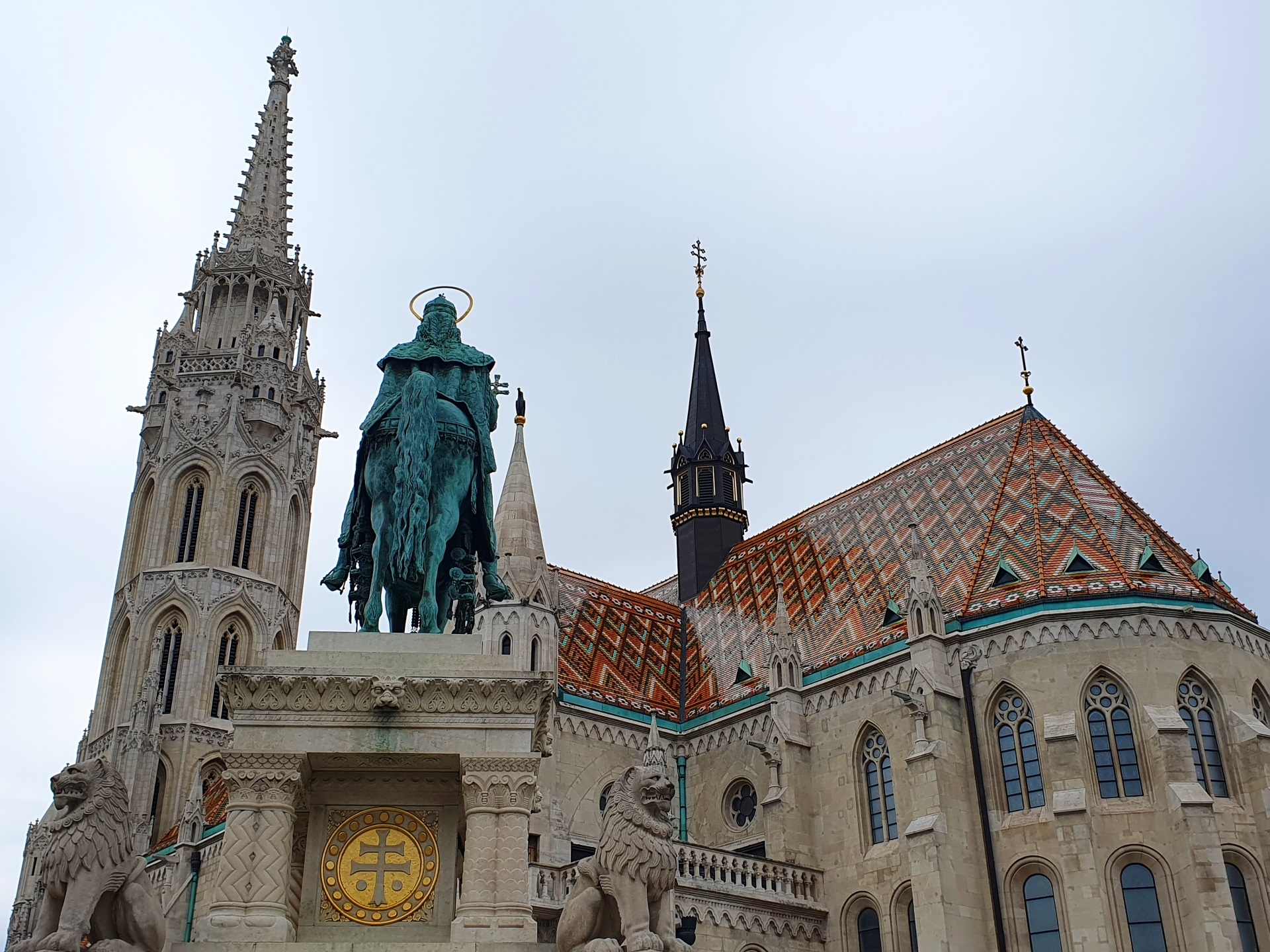
The Statue of St. Stephen looking at the Church of Our Lady of Buda. The golden double cross is a distinct motif found everywhere in Hungary, including on the coat of arms.

Another view of the place.

And some details of the Church of Our Lady of Buda Castle (Budavári Nagyboldogasszony-templom).

The church is opposite the building of the Ministry of Finance (Pénzügyminisztérium), to the left of the image. Also, in the middle of the square is the Holy Trinity Statue (Szentháromság-szobor).

Exactly above the Buda tunnel there are two buildings, the Carmelite Monastery (Karmelita Kolostor, to the left of the image) and Sándor Palace (Sándor-palota, the main building in the image). They are heavily guarded by police and what seemed to be army. Sándor Palace is the headquarters of the president of Hungary and Carmelite Monastery is the headquarters of the prime minister of Hungary.
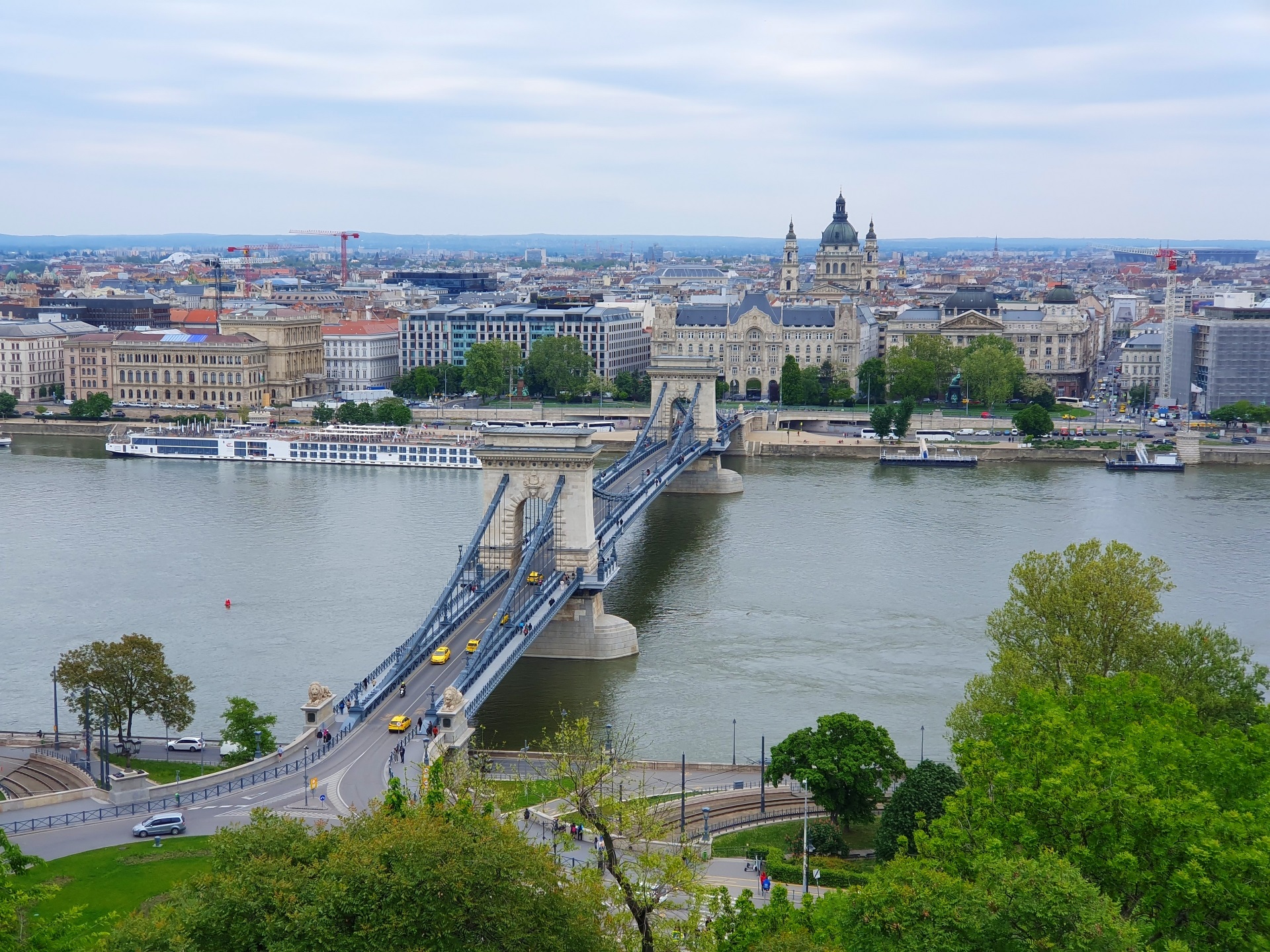
One of the most classical views of Budapest: the Széchenyi Chain Bridge across the Danube River with St. Stephen’s Basilica in the background.

The Statue of Prince Eugene of Savoy in front of Buda Castle. The French have influenced Hungary’s history in a rather complicated manner, being at the same time those who gave rulers to the Kingdom of Hungary, being the origin of the hate in the entire region surrounding Hungary (the French played people against each other) and punishing Hungary at the Trianon treaty by dismantling its ancient territory.
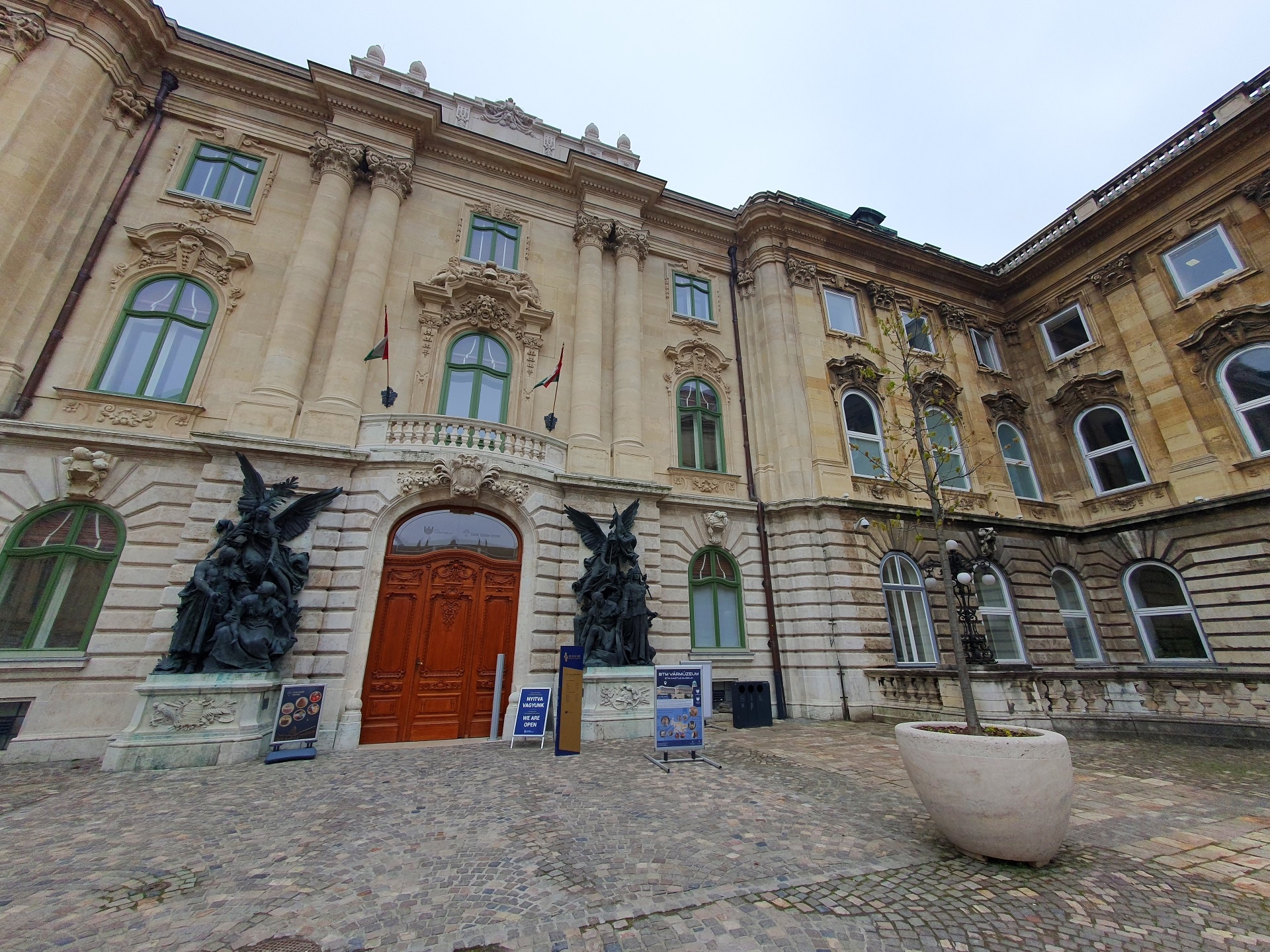
The entrance to Budapest Castle History Museum (Budapesti Történeti Vármúzeum).
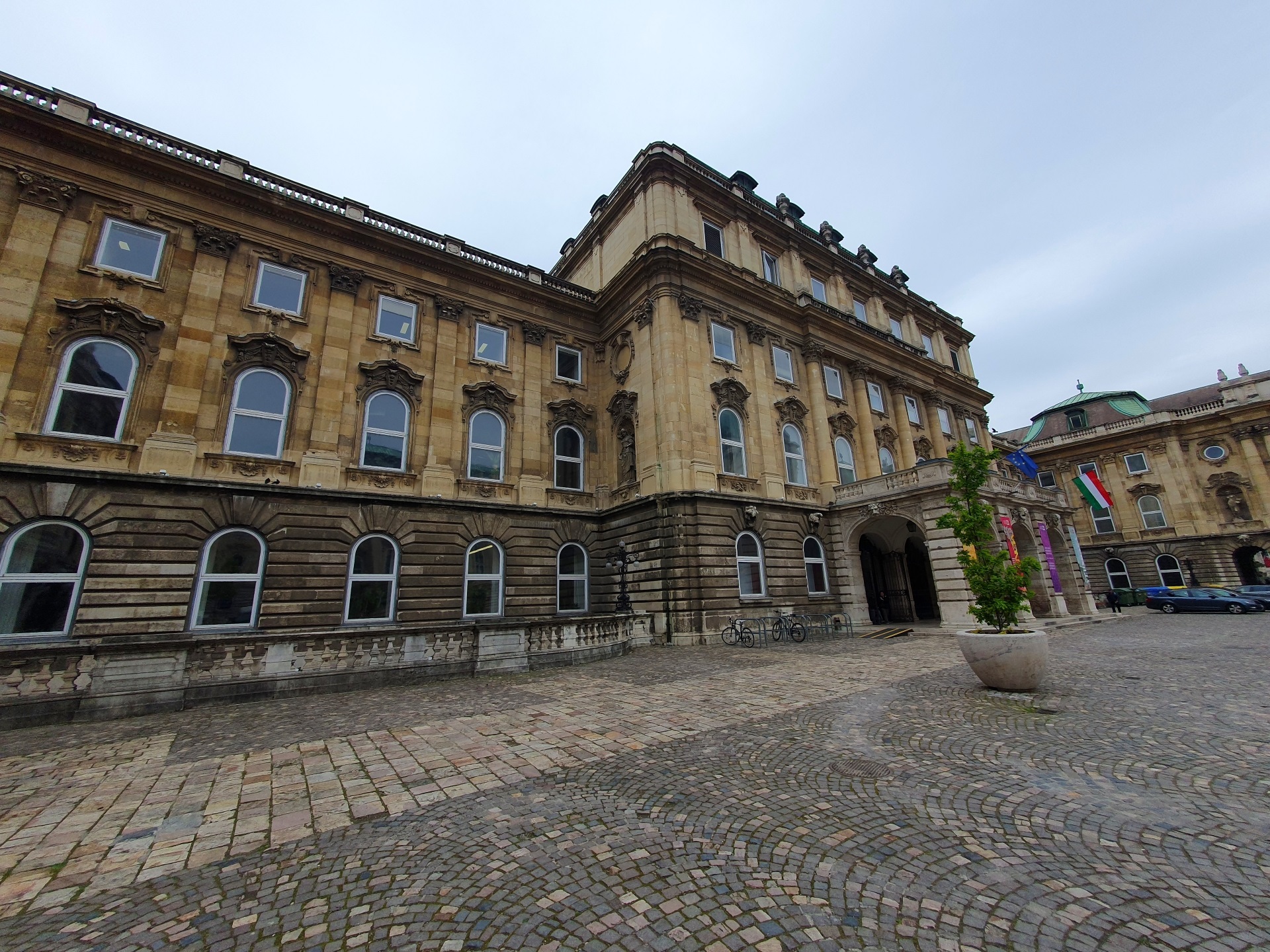
The entrance to the National Széchényi Library (Országos Széchényi Könyvtár).
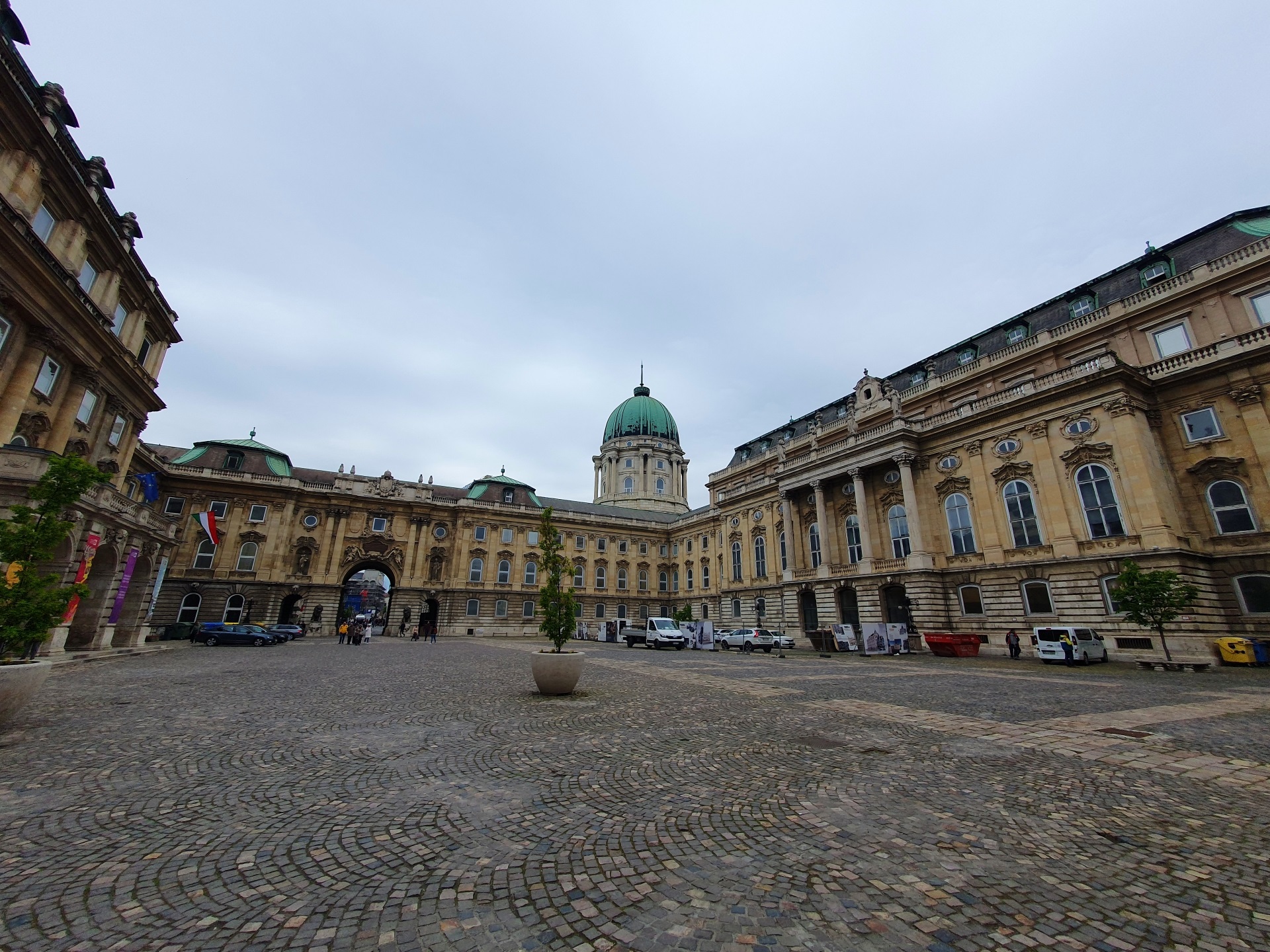
A view of the Buda Castle from the inner Lion Courtyard (Oroszlános udvar).
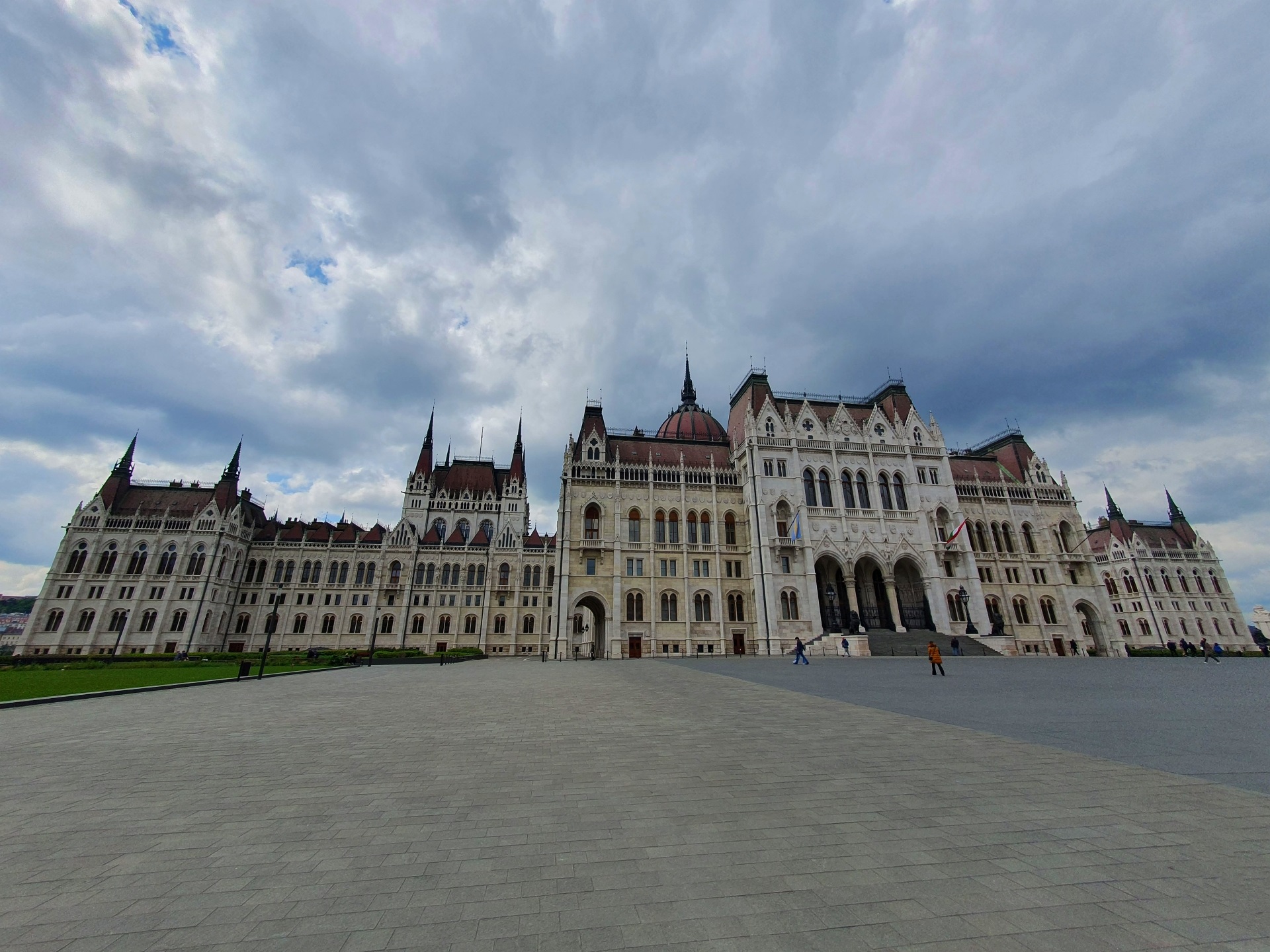
Now, crossing into Pest, here is another classical postcard: the Hungarian Parliament Building (Országház).

If you want to inflame people, especially the Romanians, you put the Flag of the Székelys (Székely zászló in Hungarian, Drapelul secuilor in Romanian) on the Parliament Building. Another complicated matter, this time not between France and Hungary but between Transylvania and Hungary. Actually, the Székelys and the Hungarians were originally two tribes that shared a common history and do share a common language. Today, what is common is much more important than what is different, therefore for a typical Romanian, the Székelys and the Hungarians are roughly same thing. However, the flags are equally represented on the Parliament, something that nevertheless can trigger people…

The Hungarians are proud people. It’s an original culture that is unique in the world. The language is completely different from anything you know. There is a sense of national identity that is stronger than everything else in the Europe I know. The lions guarding the Parliament transmit this attitude well.

The Holocaust Memorial or the Memorial for Victims of the German Occupation, with the interactive water fountain (interaktív szökőkút) in front of it. The water descends when you come closer to it and you can walk through the fountain without being sprinkled.
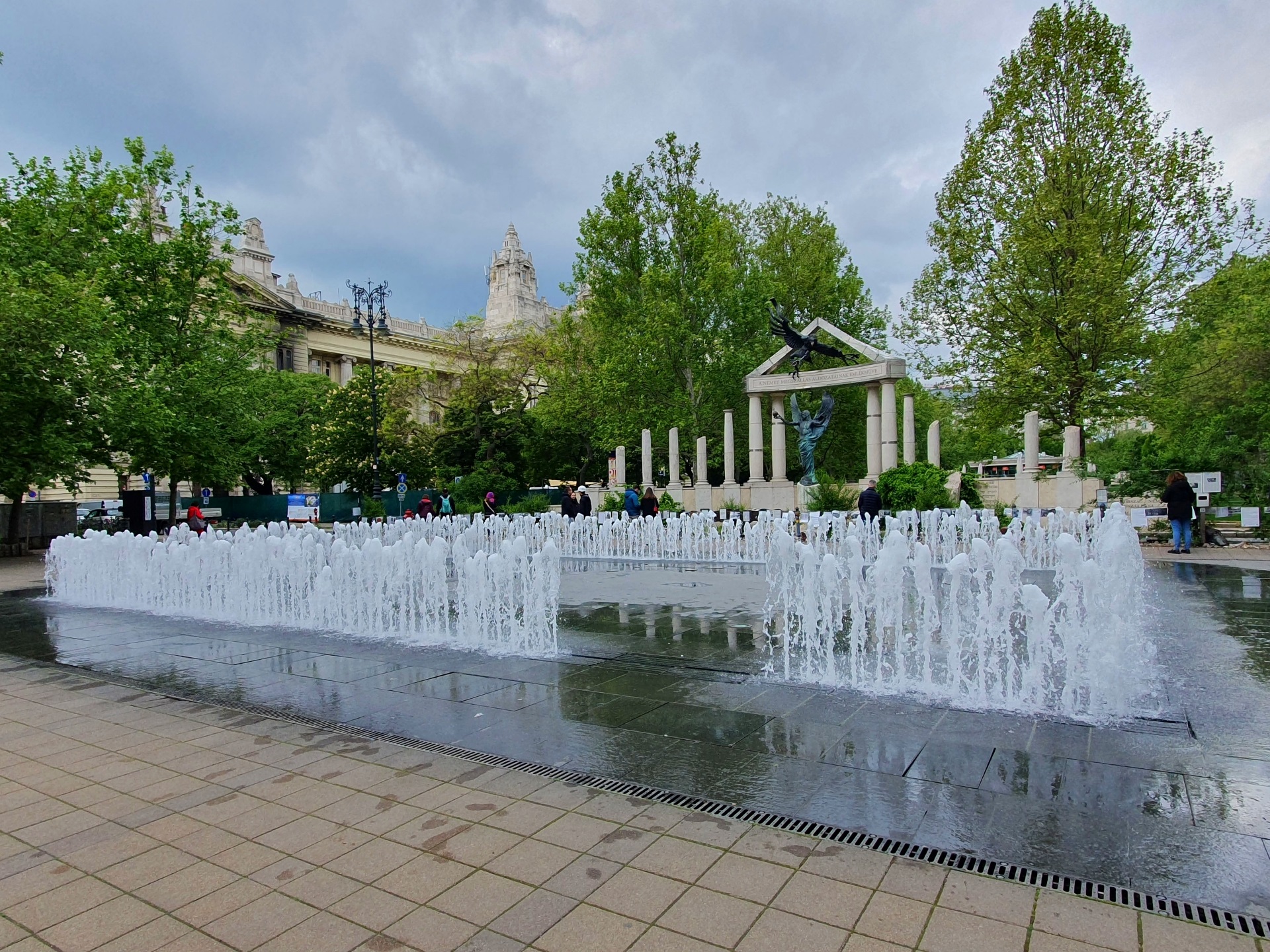
Here is one open side of the fountain, so that you can enter. It’s in the Liberty Square (Szabadság tér).
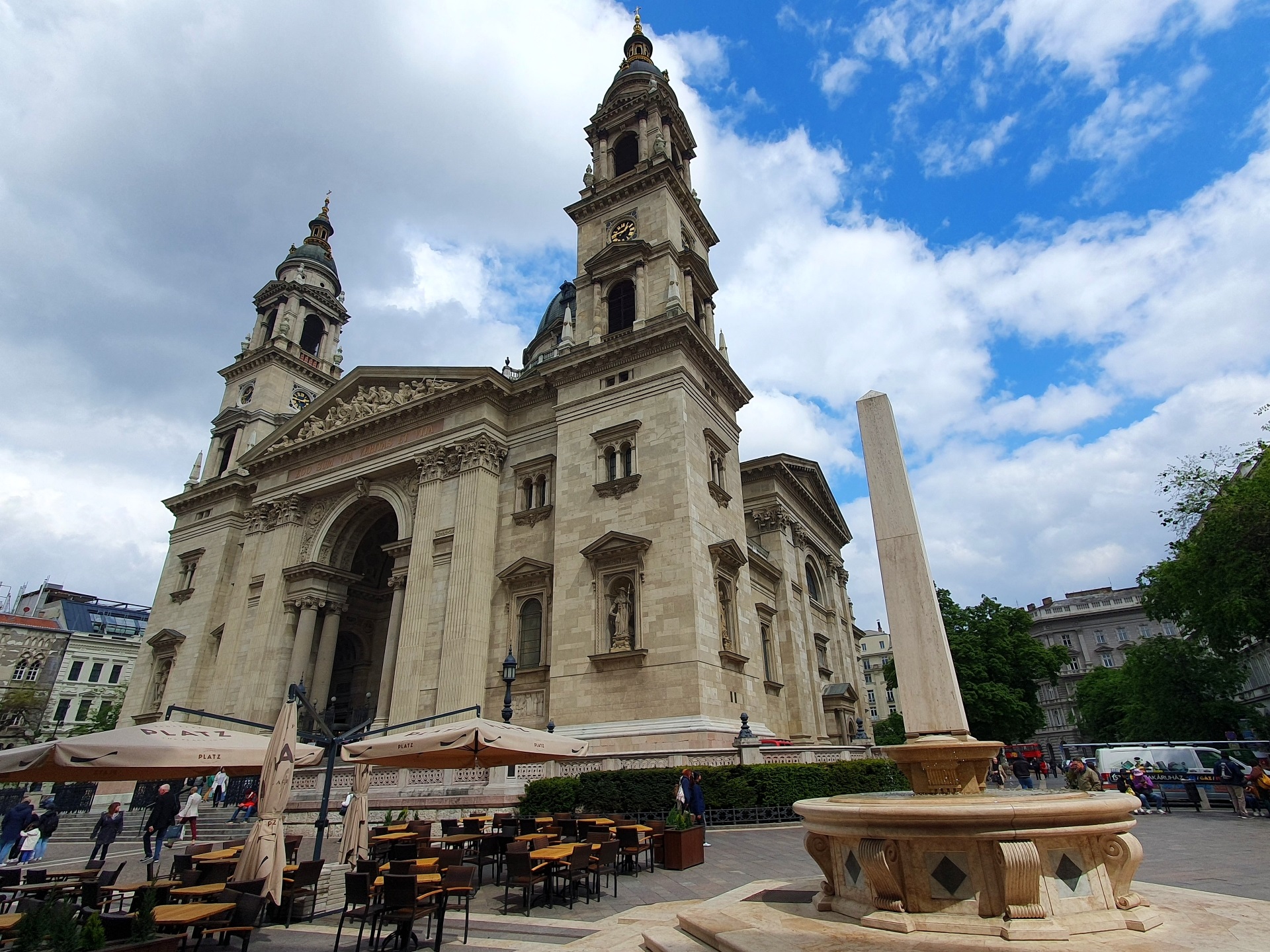
The huge St. Stephen’s Basilica (Szent István Bazilika) in Szent István tér.
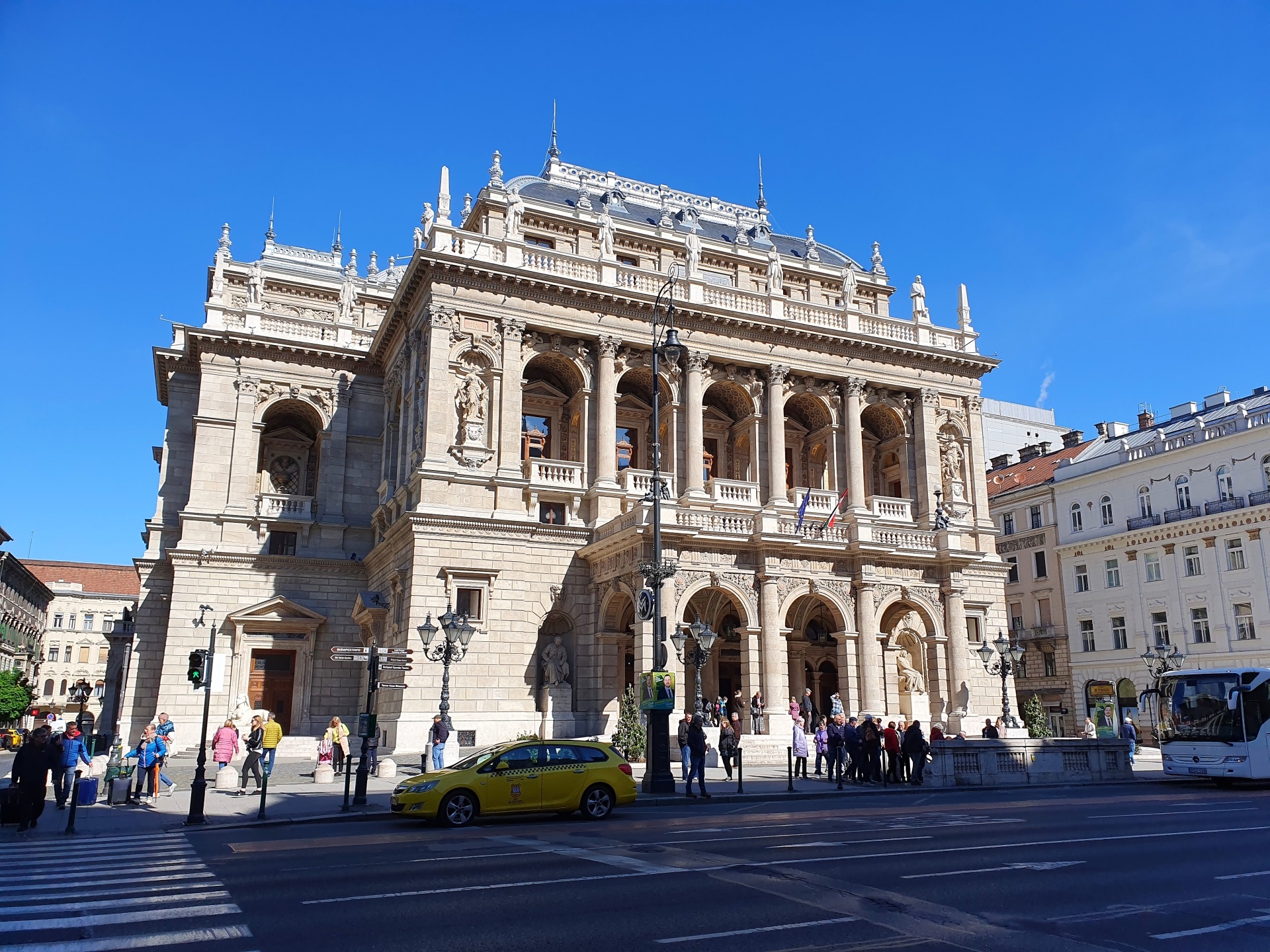
Another classical view of the Hungarian State Opera (Magyar Állami Operaház) on the famous Andrássy út (Andrássy street).

The Heroes’ Square (Hősök tere), with the Museum of Fine Arts (Szépművészeti Múzeum) to the left and the Millennium Monument (Millenniumi emlékmű) in the center.

A closer look. Here are the statues of the most important heroes in the Hungarian history. If you don’t know who you are, you come to Hősök tere and meditate about your forefathers and the heroes that contributed to the Hungarian nation of today. Then you will know who you are.

The Gatehouse Tower (Kaputorony) close to Vajdahunyad Castle.
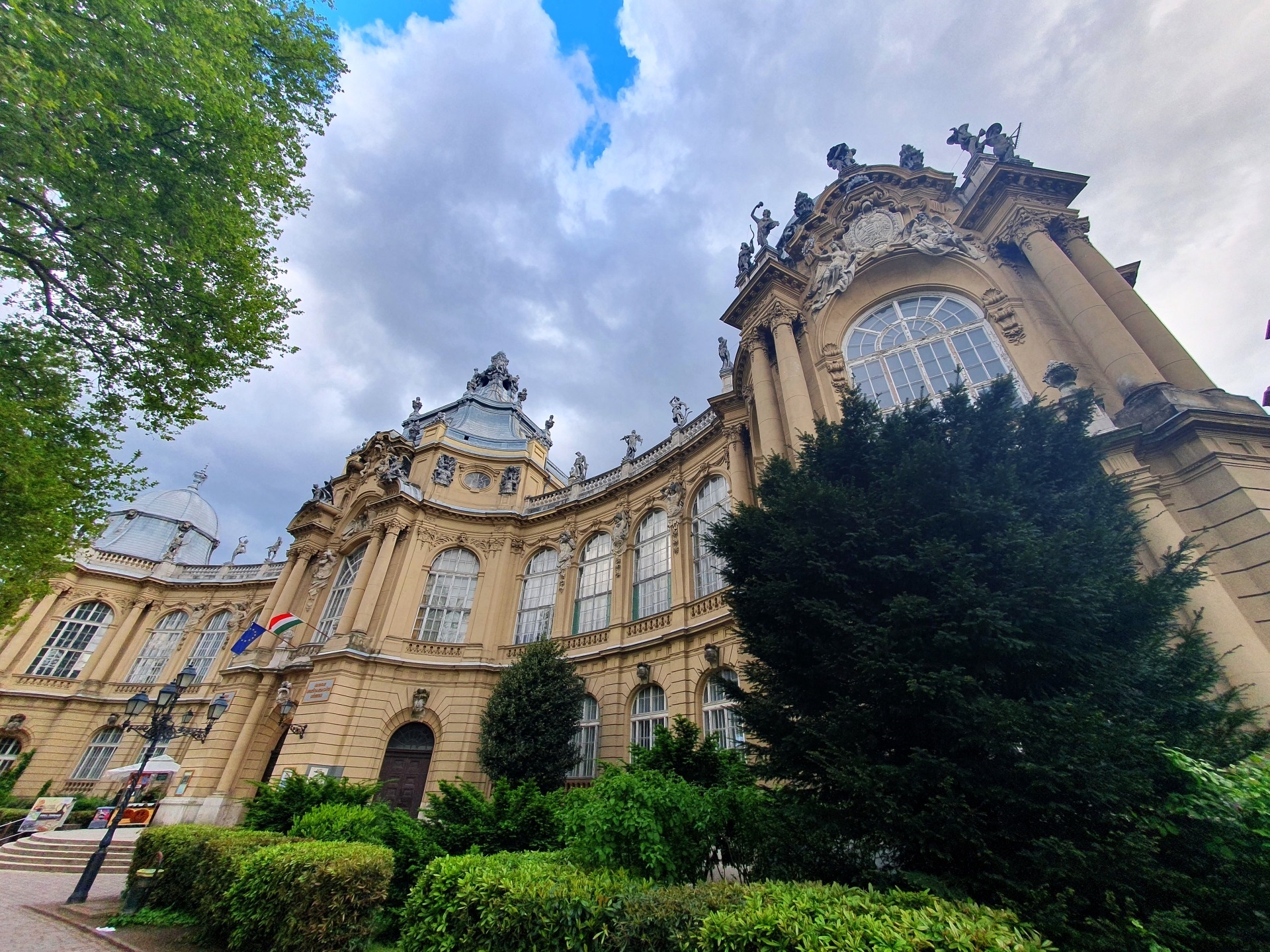
The Vajdahunyad Castle in the City Park (Városliget). We are definitely in Central Europe.

But there are well-known modern buildings as well. I know this building for about 20 years; it’s a landmark.

The newer building of Museum of the Ethnography (Néprajzi Múzeum), across the street.
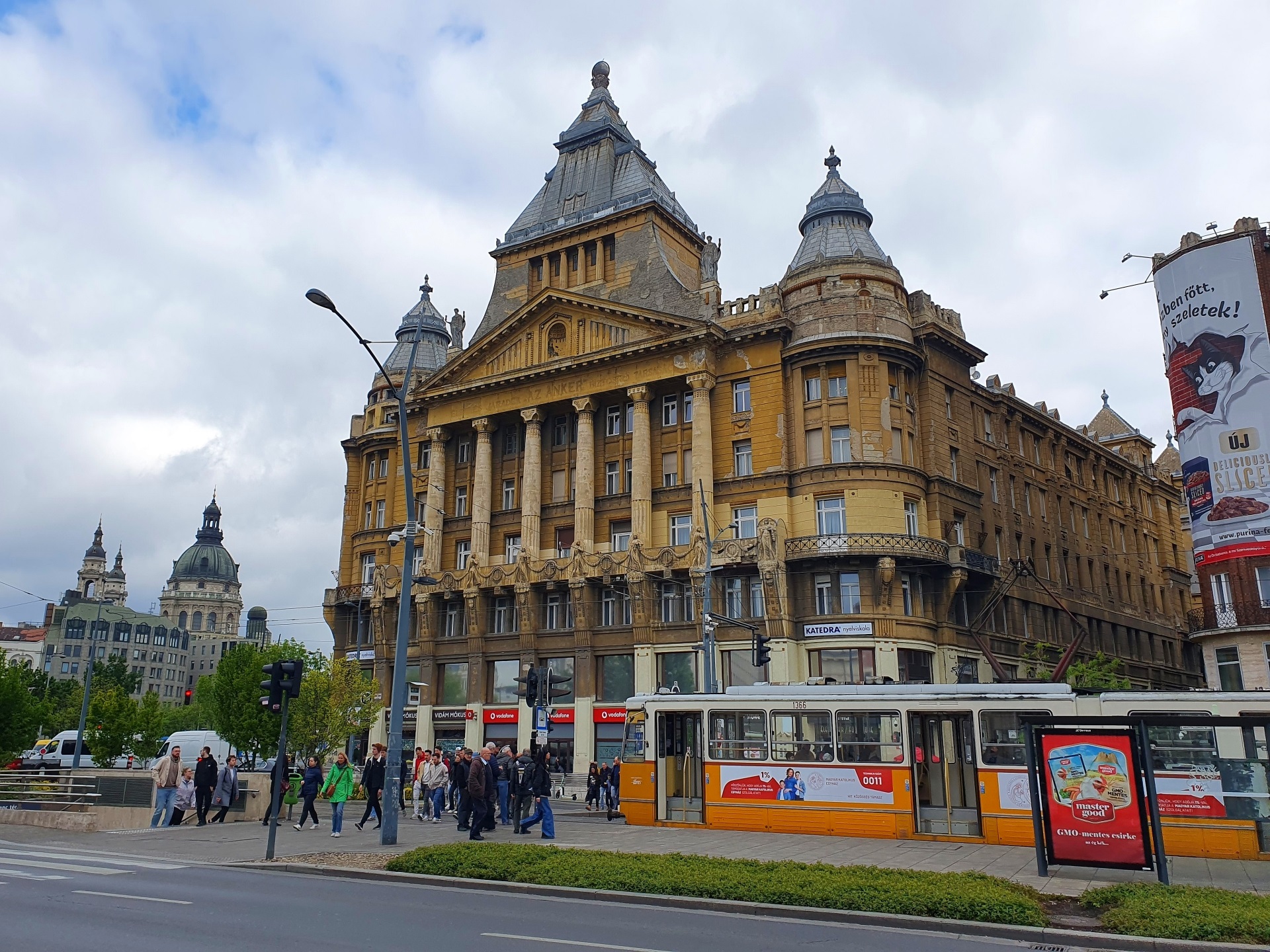
Back to downtown Pest and to Anker Palace (Anker palota), close to Elizabeth Square (Erzsébet tér).
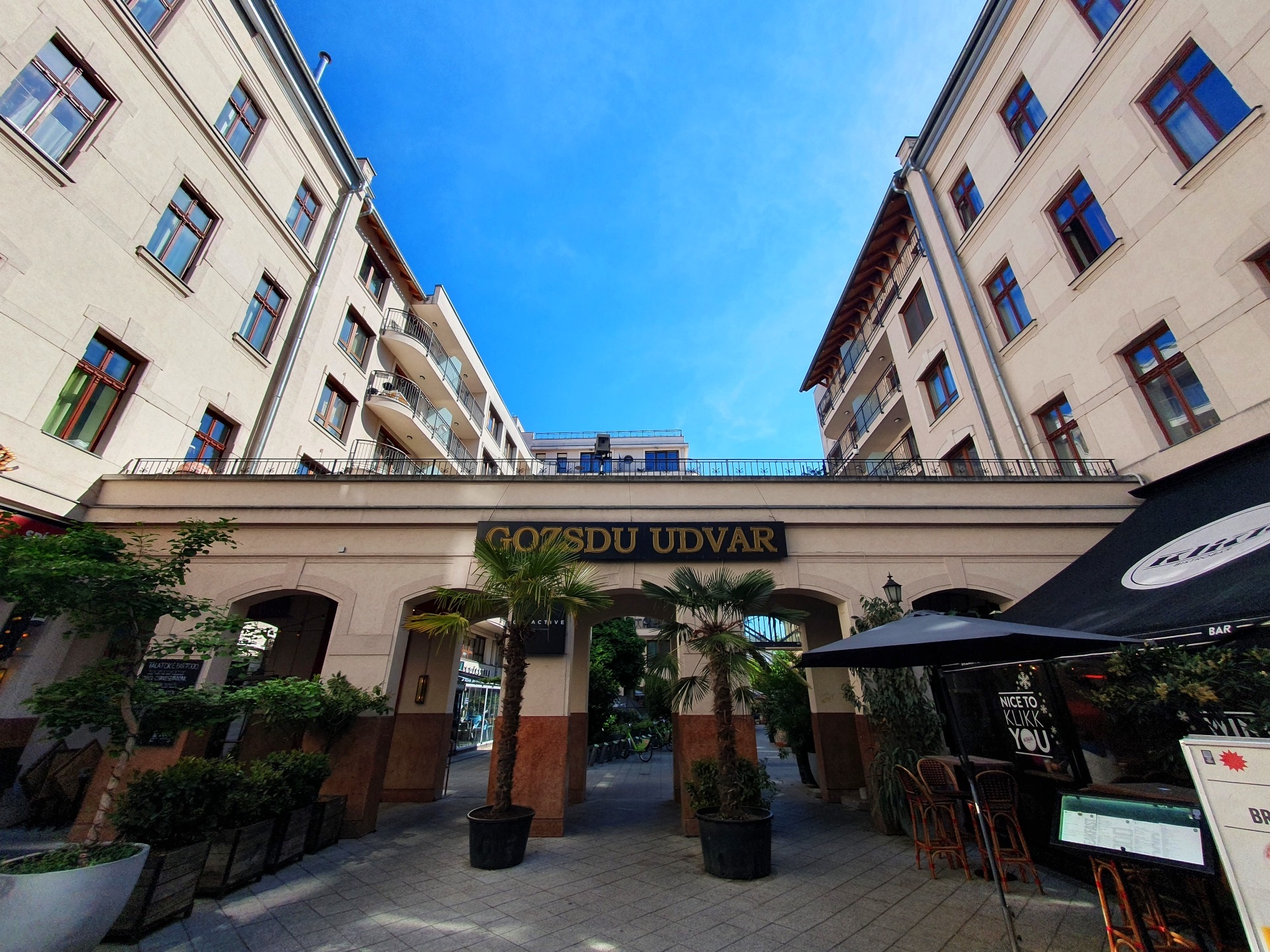
The Romanians used to have some houses in Budapest, left as inheritance to the Romanian people by a rich Romanian lawyer, Mr. Emánuel Gozsdu (Emanoil Gojdu in Romanian). The Romanians were unable to look after this architectural legacy, so the houses were in ruin. Somehow and after much effort the Hungarians have managed to get the keys and renovate them. Now they are in the heart of a vibrant artistic district. And the Romanians are visiting them and perhaps get bitter, if only they knew that those houses used to be theirs, which I doubt in most cases. Here is the Gozsdu Court (Gozsdu udvar) at the center of several Gozsdu houses.
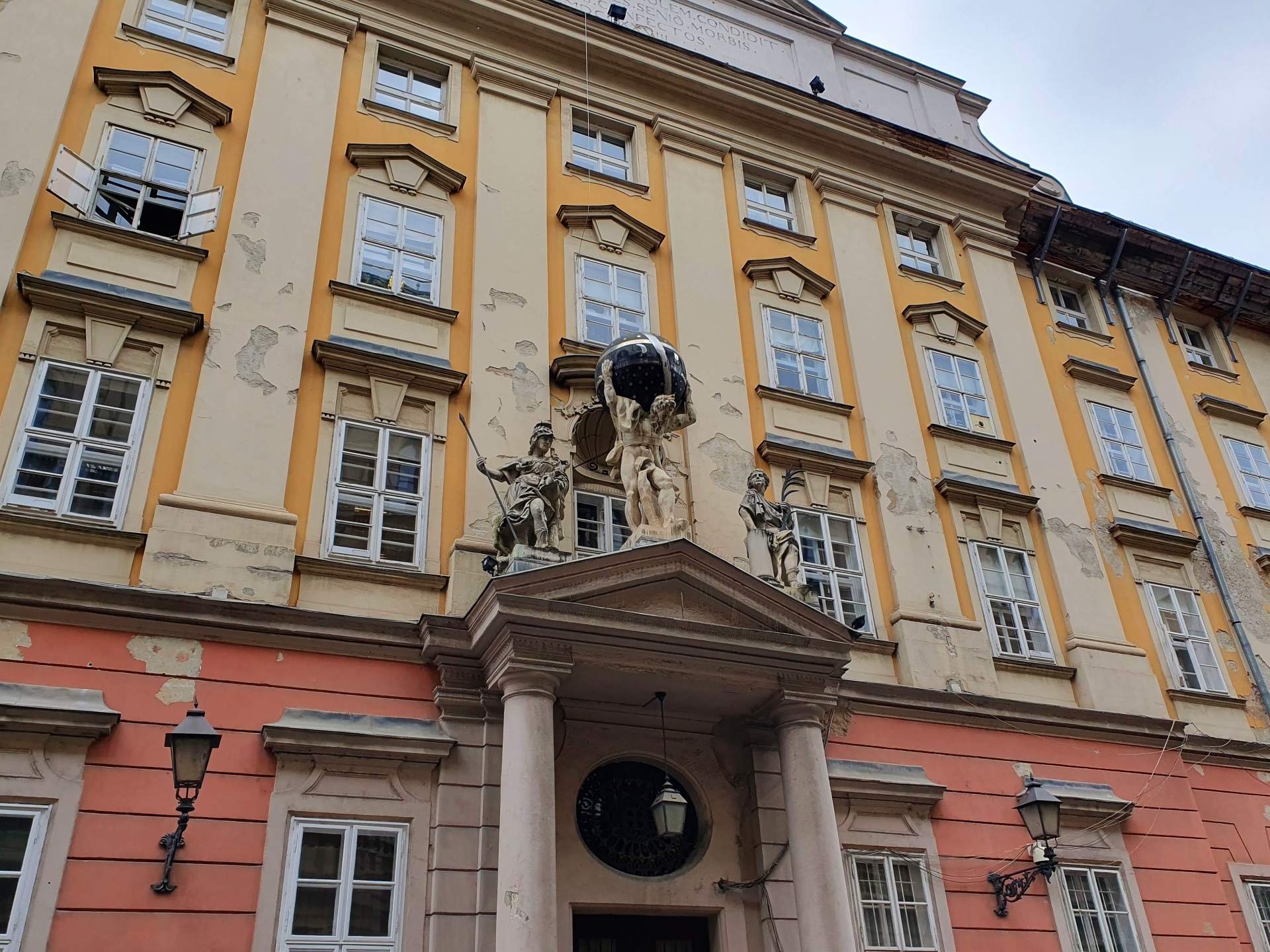
The Mayor’s Office of the Municipality of Budapest… or the Budapest City Town-Hall. Atlas carrying the sky on his shoulders is an original entrance statuary complex.

A less known little square, next to the Semmelweis University Central Library (Semmelweis Egyetem Központi Könyvtár). Semmelweis University is the medical university of Budapest.
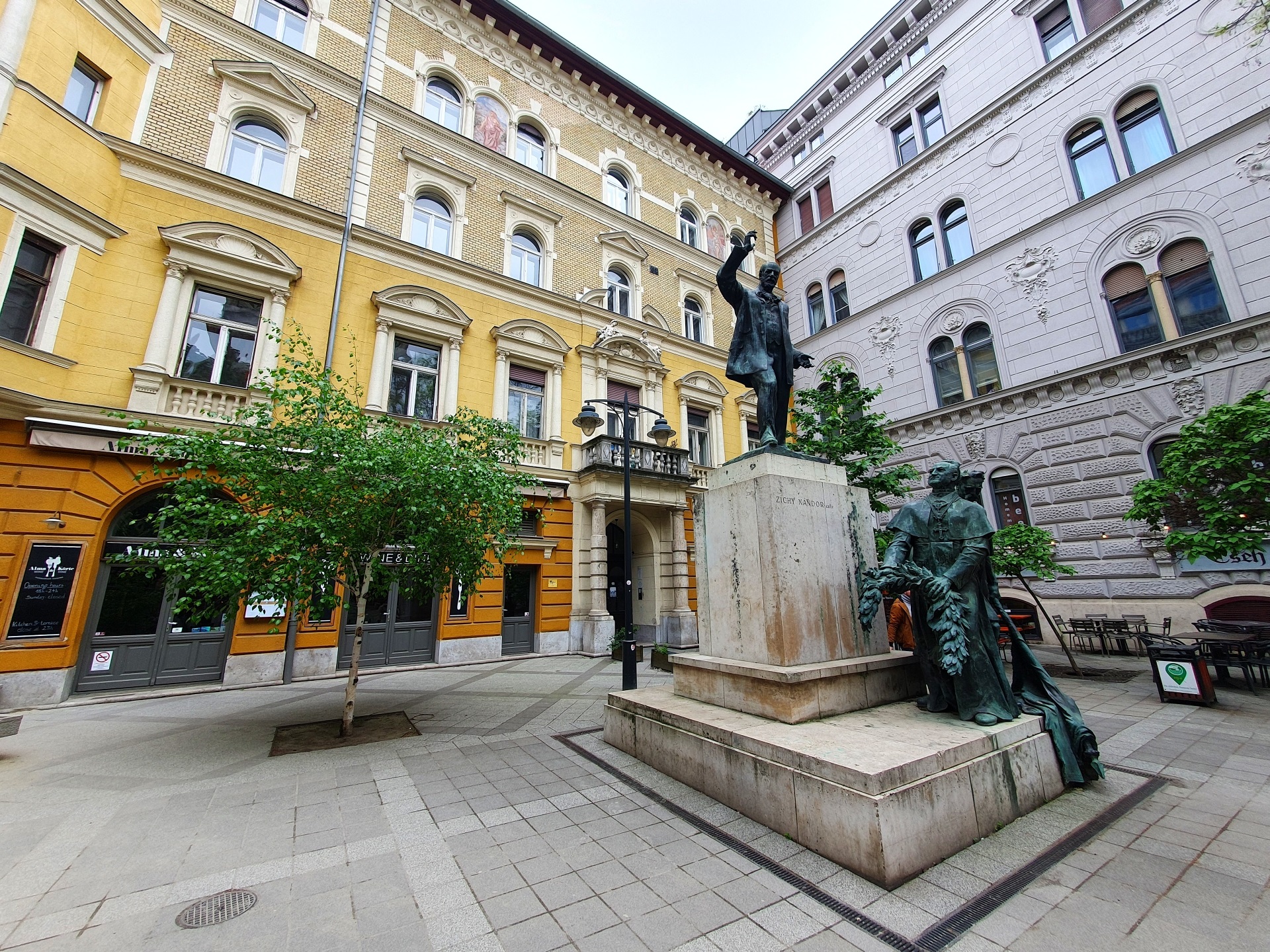
Lőrinc Pap Square (Lőrinc Pap tér) with the Semmelweis Kórház (Semmelweis University Clinical Center) behind. In the square there is also the Jézus Szíve Jezsuita Templom (Heart of Jesus Jesuit Church). It’s one hidden place in Budapest I find particularly pleasant.
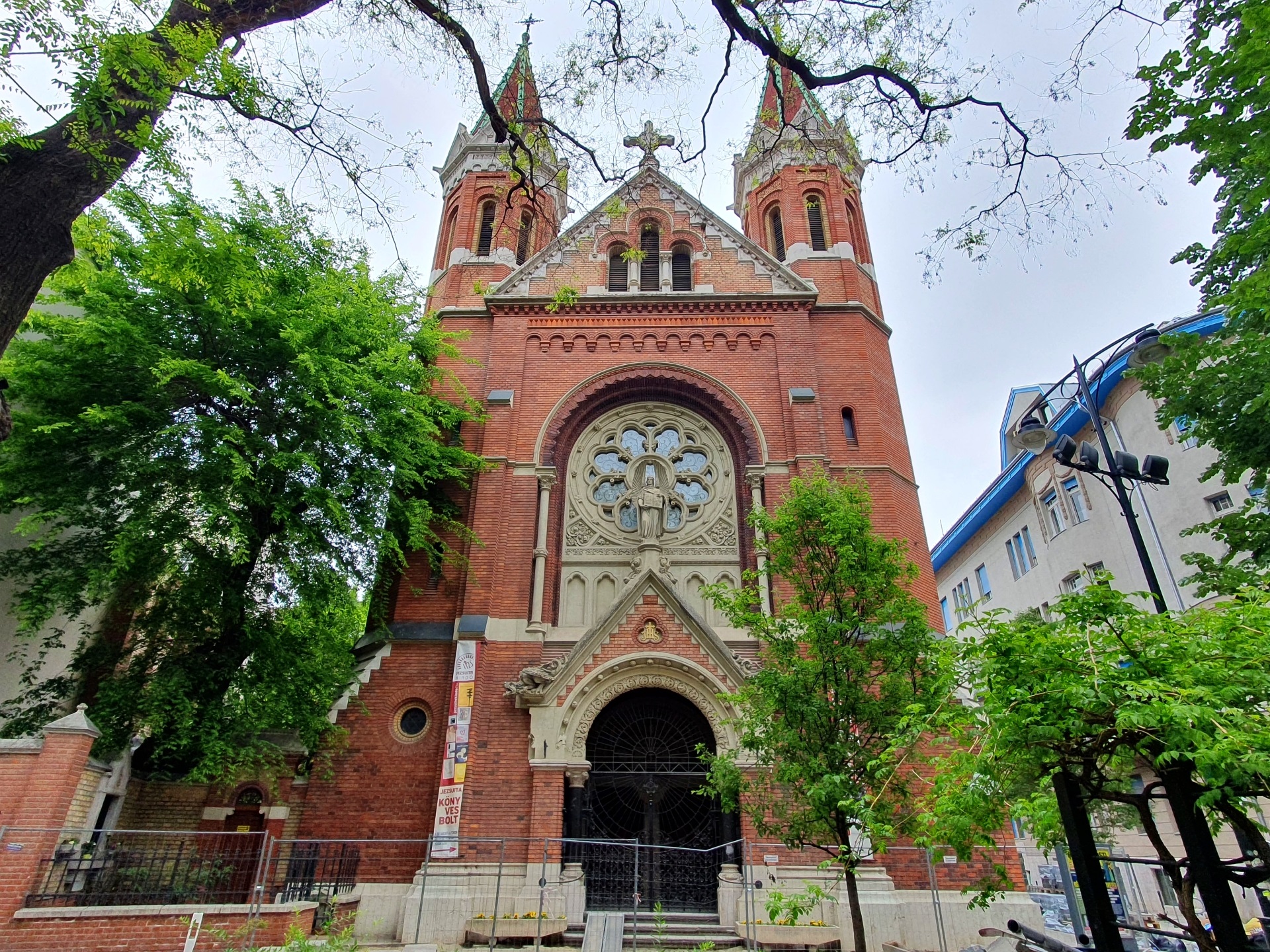
Thanks for travelling with me through Budapest!
Budapest


